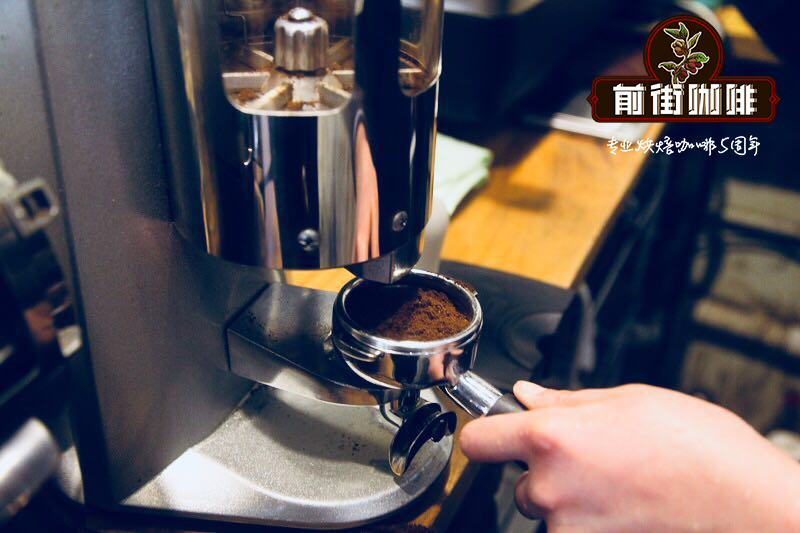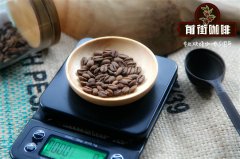How should coffee trees be planted? can Arabica coffee trees survive at low elevations?

Coffee trees grow in tropical areas between the Tropic of Cancer and the Tropic of Cancer and near the equator, also known as the world coffee growing belt. Coffee trees vary greatly in appearance due to factors such as species and regions. The long green leaves range in color from yellow-green to dark green or even brass. These shiny trees have a wavy shape, a characteristic more pronounced in Robasta than in Arabica.
Although coffee trees need irrigation, pruning, weeding, fertilization, and mulch, if the soil is not optimal for coffee trees, they will not bear fruit for years. Coffee trees thrive in soils rich in nitrogen, potassium carbonate and phosphoric acid. When they are 4-5 years old, they produce their first fruits quickly and peak in number. If they are well cared for, they will continue to produce fruits for 20-25 years.
One of the characteristics of the coffee tree is that its fruit can bear fruit several times a year. Another characteristic is that flowers and fruits (also known as cherries) coexist at different stages of maturity. The entire coffee industry is styled by the vagaries of nature. If the fruit is overripe, the beans inside will rot. If not ripe enough, the beans will not ripen themselves. So bean pickers often return to the same tree several times in search of ripe fruit-and they can only pick two pounds of green beans on several trips, which is the average annual yield of a tree. Keep this in mind the next time you buy coffee.
Coffee farmers who produce low-grade coffee beans prefer to harvest the beans in a labor-saving way, but this reduces the coffee's flavor and grade because of its impure quality. In some parts of Africa, coffee beans are picked by shaking the coffee tree, shaking the fruit off the ground and picking it up before it hurts and rots. In most parts of Brazil, where second-grade coffee is produced, the method of harvesting coffee is to pluck all the leaves, flowers, overheated and green fruit from the branches at once. It takes two years for the coffee trees so damaged to recover to normal.
Coffee trees bloom delicate white flowers is a rare spectacle, its fragrance like orange and jasmine. Sometimes only a tree blooms alone; like a young bride, sometimes the whole coffee garden is in full bloom, looking like a white sea of flowers, beautiful and intoxicating, but the flowering is fleeting. Within two or three days, the petals dispersed with the wind, leaving only the fragrance swirling in the air.
Before long, tiny piles of fruit appear, first green, then yellow, then red and magenta, ready for harvest when they're almost black. In Jamaica, bats are the first to know whether the fruit is ripe or not, and they sip the coffee syrup at night to tell farmers that the fruit is ripe and ready for harvest. The oval fruit is tightly clustered around the branches, and the slender, smooth dark green tooth-shaped leaves are born on both sides of the branches. The leaves on the sunny side are harder and the back is softer and paler, forming a fan at the edge. Branches also grow from opposite sides of the trunk.
Evergreen trees are usually bred in nurseries, grow into saplings, and move to coffee plantations a year later, following exactly the methods used by the rich Arabs to grow coffee trees. For the first four or five years of its life, coffee trees take root downwards, grow upwards into trunks, and develop branches into umbrella-like shapes to bear rich fruit later on.
There are three main commercial varieties of coffee trees, each of which has a different classification. Arabica coffee is the most important and best quality coffee bean, originating in Ethiopia and is currently the most widely grown coffee. Liberica is from Liberia and robusta is from Congo. The latter's name indicates that it is sturdy, resistant to harsh weather and disease, and can grow freely in the wild in woodland without much manual care when preparing soil, weeding and pruning. Although the taste is more bitter than Arabica, the quality is also much inferior to Arabica. Most Africans drink nobusta coffee. Because of the high yield, it is used to make instant coffee. Arabica coffee is best grown in mountains between 2000 and 6,500 feet above sea level-the higher the altitude, the better the quality; Liberita and Nobasta are best grown below 2000 feet.
Coffee trees can only grow in tropical and subtropical regions, coffee trees in the "coffee belt" range of different climate, soil, altitude, rainfall can grow in the middle. The coffee tree thrives in Africa's hot, humid valleys and forest rainforests; it produces high-quality coffee beans in cold, foggy, windy Central America; and it flowers and bears fruit in the Caribbean, where the climate varies from drought to torrential rain. These factors are the secret to the variety and variety of coffee beans.
The ideal growing environment is a temperature between 65 and 75 degrees Fahrenheit, an appropriate altitude, and annual rainfall (between 40 and 120 inches). The timing of rainfall is important, with intermittent heavy rain and intense sunlight during ripening and a dry spell at harvest. Any type of soil is suitable, but the best soil is a mixture of decomposed volcanic soil, humus soil, and permeable soil.
A few hours of sunshine a day is enough. Hillsides are ideal because of their short exposure time and good drainage. Coffee trees like wet roots, high leaves planted in the coffee garden, on the one hand wind, on the other hand shade.
Frost and leaf diseases are the most common killers of coffee trees.
Important Notice :
前街咖啡 FrontStreet Coffee has moved to new addredd:
FrontStreet Coffee Address: 315,Donghua East Road,GuangZhou
Tel:020 38364473
- Prev

Introduction to Coffee Culture and Customs in Sweden you need to pay attention to these points when drinking coffee in Sweden
Swedish coffee culture introduction to drinking coffee in Sweden you need to pay attention to these points. In Sweden, coffee is not just coffee. It's a way of life. Sweden ranks in the top three of the world's largest consumers of coffee (after Finland and the Netherlands), although Swedes must drink coffee in the morning like the rest of us, but in this Scandinavian country it is more important to have a coffee break
- Next

For different grindability of coffee beans, how to choose the grindability of hand-brewed coffee and ice-drop coffee is different.
Even if you say coffee, the taste of coffee will vary greatly depending on the roasting degree of coffee beans, the difference in the size of coffee powder and the difference in extraction. Here, we will introduce the effect of rough grinding of coffee beans on the taste. The particle size and taste of coffee powder can be roughly divided into fine grinding, medium grinding and coarse grinding. Among them, it can be further divided into ultra-thin and medium-thin. The size of the powder
Related
- Beginners will see the "Coffee pull flower" guide!
- What is the difference between ice blog purified milk and ordinary milk coffee?
- Why is the Philippines the largest producer of crops in Liberia?
- For coffee extraction, should the fine powder be retained?
- How does extracted espresso fill pressed powder? How much strength does it take to press the powder?
- How to make jasmine cold extract coffee? Is the jasmine + latte good?
- Will this little toy really make the coffee taste better? How does Lily Drip affect coffee extraction?
- Will the action of slapping the filter cup also affect coffee extraction?
- What's the difference between powder-to-water ratio and powder-to-liquid ratio?
- What is the Ethiopian local species? What does it have to do with Heirloom native species?

